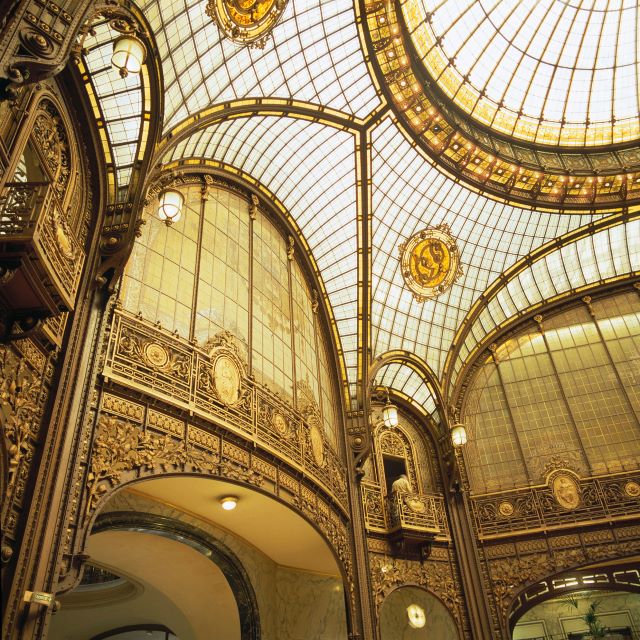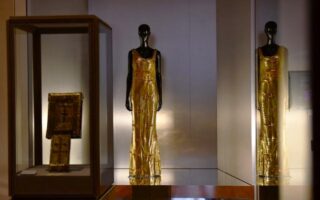Behind the Scenes at Société Générale at 29 Boulevard Haussmann
- SUBSCRIBE
- ALREADY SUBSCRIBED?
BECOME A BONJOUR PARIS MEMBER
Gain full access to our collection of over 5,000 articles and bring the City of Light into your life. Just 60 USD per year.
Find out why you should become a member here.
Sign in
Fill in your credentials below.
Anyone could be forgiven for walking past number 29 Boulevard Haussmann without a second thought, thinking that it is just another Second Empire construction, home to a financial institution, in an area dominated by the large department stores and the imposing Palais Garnier.
How wrong that would be! Because behind the ornate façade, where the red-and-black logo of French bank Société Générale glitters proudly, stands one of the most interesting buildings in the area.
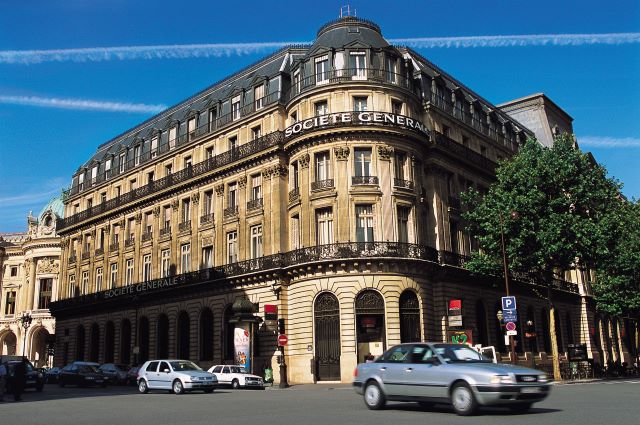
Outside view of Société Générale. © Société Générale
Its story begins at the beginning of the 20th century, when the board of the bank decided that the original headquarters on rue de Provence had become too cramped for its thriving activity. In 1906 the bank acquired 29 Boulevard Haussmann, which at the time housed shops on the ground floor and a mix of offices and apartments on its upper floors (some of them home to illustrious residents, like Impressionist painter Gustave Caillebotte).
The Beaux-Arts architect Jacques Hermant was tasked with transforming the block into a state-of-art office building. He spared the original façade but everything else went. Four underground floors were excavated to make way for the bank’s strong-room.
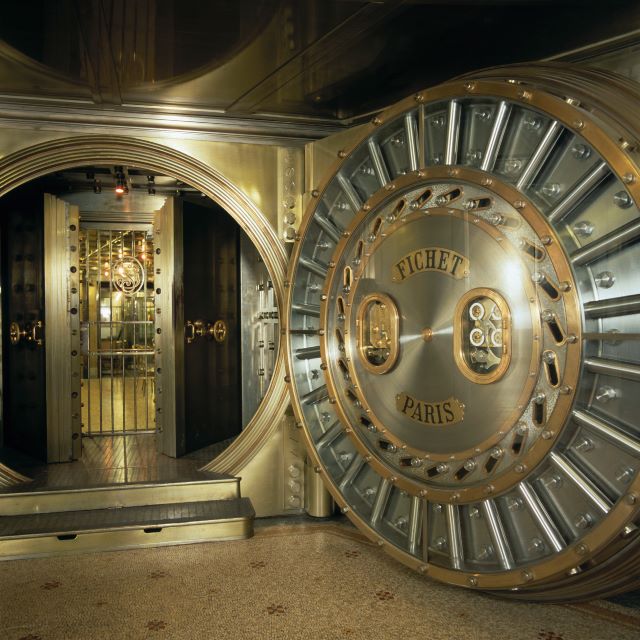
The safe room’s circular door. © Société Générale
The architect traveled to the United States to look at the new construction
techniques that were making sky-scrapers possible and, upon his return, he pioneered the use of reinforced steel for the structure, crowning the building with a double-domed glass structure in pure Eiffel style. The circular shape of the ground floor branch, sporting ornate Beaux-Arts style, introduced an innovative open-plan lay-out.
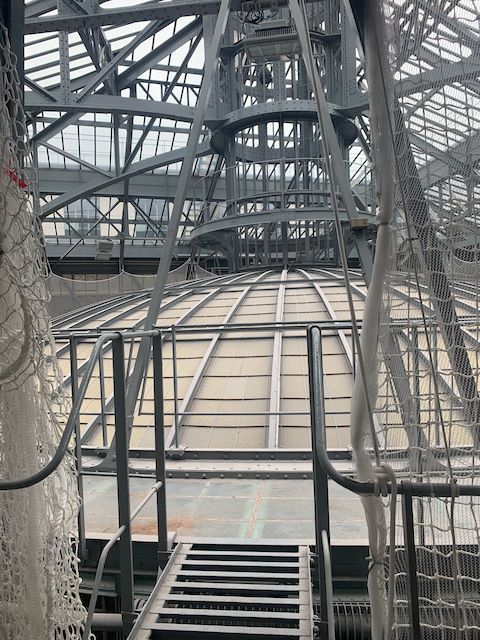
Top of the Eiffel Tower-style structure © Sarah Bartesaghi Truong.
Choosing to use the circle as a leitmotif across the decor, Hermant reprised it in the medallions that surround the SG acronym in the stained glassed heights of the dome, on the mosaic floors and even behind-the-scenes, down in the hidden depths of the strong room, whose precious cargo was protected by a circular safe door (instead of the standard rectangular shaped ones used by French banks at the time).
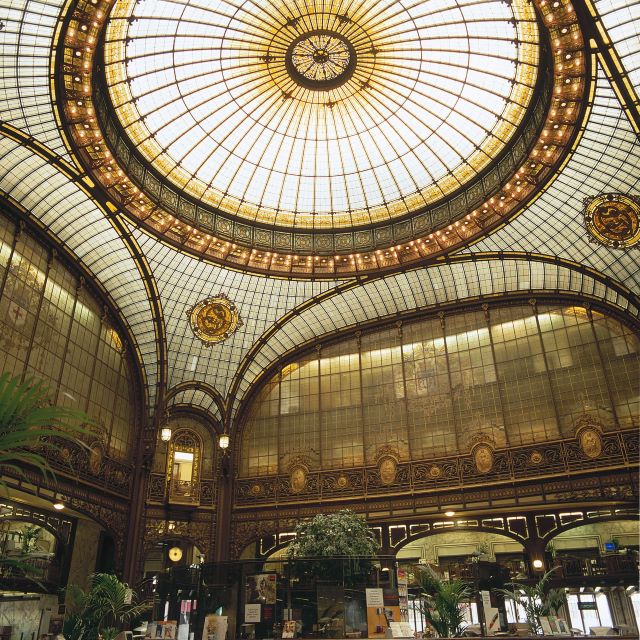
The floor plan on the ground floor. © Société Générale
With time, the shape has become such an integral part of the SG visual imagery that, when the bank outgrew its headquarters in the 1990s, and decided to move to the business district emerging in La Défense, the architects tasked with building its new offices designed two semi-circular towers harking to a split version of the original circle used by Hermant.
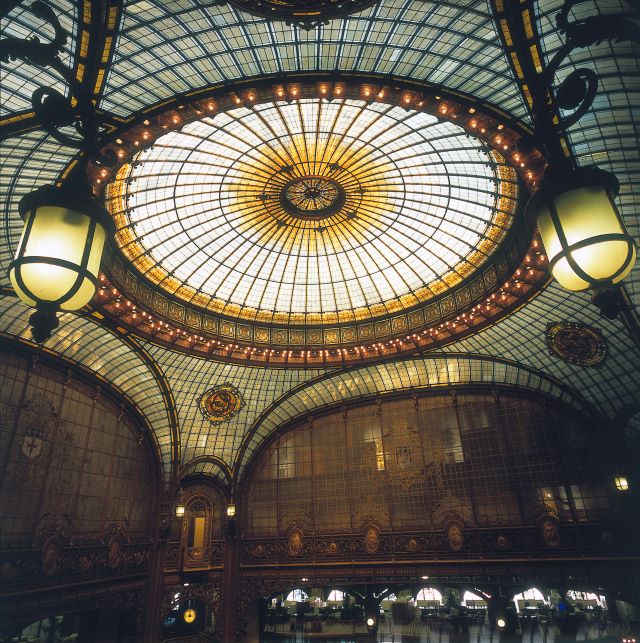
The glass stained dome © Société Générale
And the move to La Défense is the reason that brings me to 29 Haussmann today. Because the brand new towers needed an appropriate display of modernity inside to match the one they showed outside, the Board of Société Générale decided that contemporary abstract art would be the perfect choice for the task. Nowadays, the corporate collection takes pride of place not only at La Défense, but also here, where the private banking arm of the company welcomes its clients.
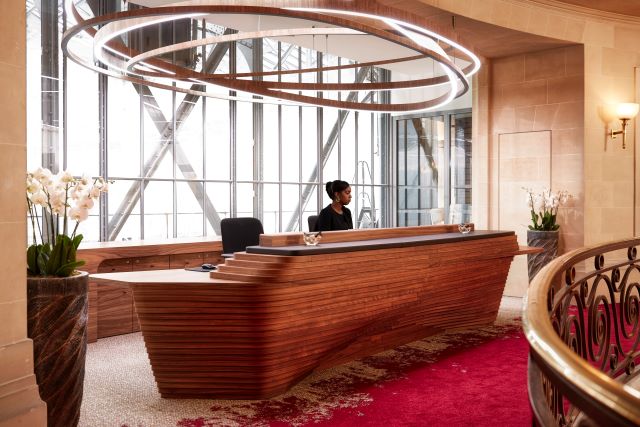
The welcome desk at Société Générale. © Société Générale
What started out as a way to make the brand new buildings more welcoming to both staff and visitors, has become an integral part of the image of the bank, nowadays heavily involved in supporting the contemporary art universe. From its sponsorship of one of the biggest French awards in the sector, the Marchel Duchamp prize conferred by the Adiaf (Association for the International Diffusion of French Art), to its decision in 2020 to allocate the funds normally earmarked for acquisitions of new works to grants for emerging artists studying at the Beaux Arts school of Paris instead, SG has become a power player on the French art scene.
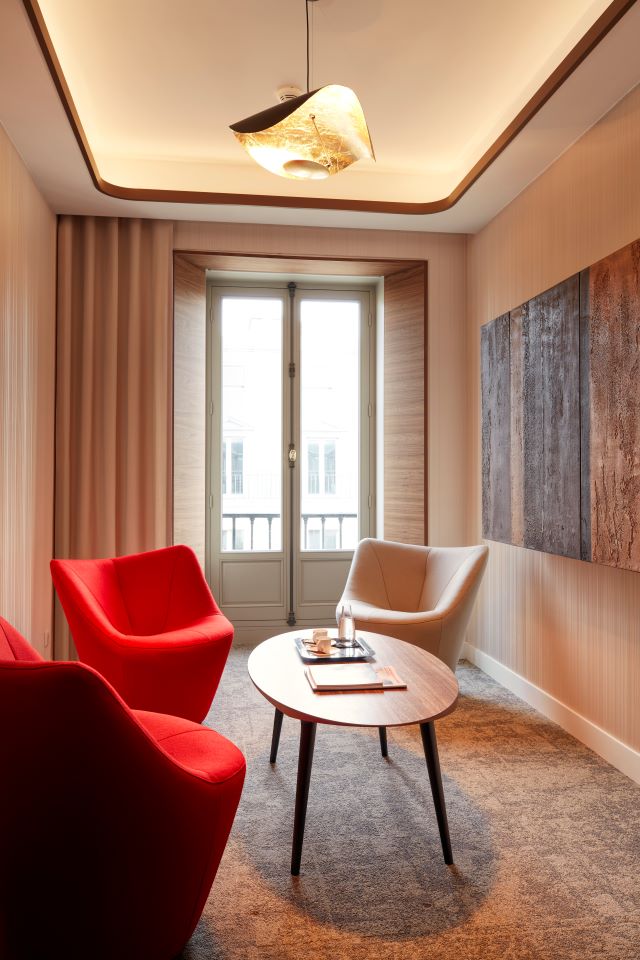
The Petit Salon. © Société Générale
It is a privilege to be allowed to explore 29 Haussmann and to discover how the collection has evolved over the years. As I get ushered up to the client meeting rooms surrounding the upper part of the glass dome, I am greeted by a photograph of Liu Bolin, the Chinese performance artist, hiding in plain sight in front of the massive door of the strong room. It is a fitting introduction to the most recent evolution of the collection, away from the relatively safe confines of abstract art, and towards more socially and politically charged themes, as put forward by a new generation of artists.
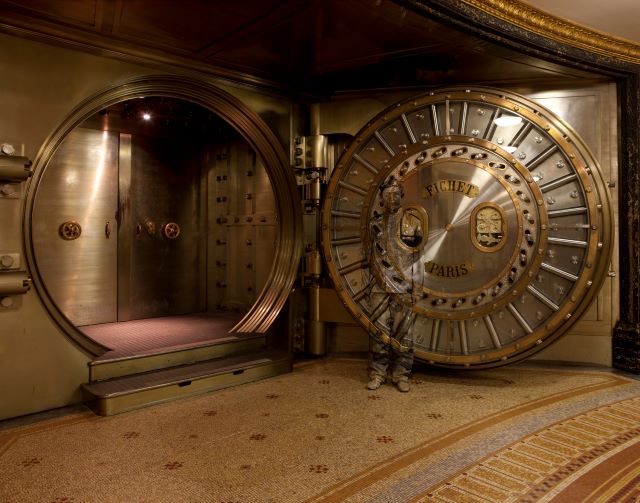
Liu Bolin hides in plan sight in front of the safe door. © Société Générale
The works of art are perfectly integrated into the fabric of the building: some of the meeting rooms reprise the story of 29 Haussmann, others wink at SG’s other passions like rugby, all of them forming a dialogue between themselves and with the history of the bank.
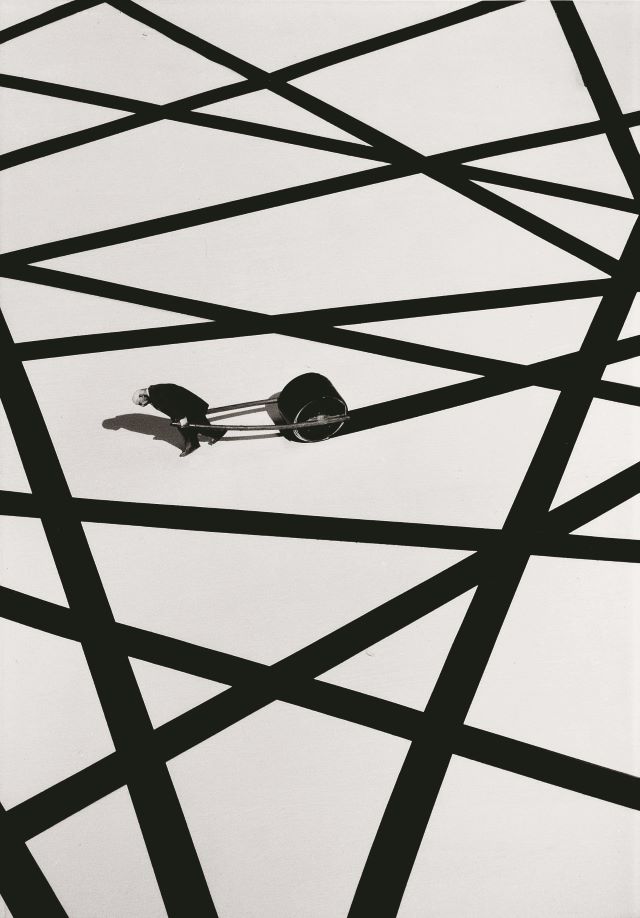
Gilbert Garcin, “La dernière ligne droite.” © Société Générale
As the Head of Art Banking Services for SG Private Banking, Laurent Issaurat explains that the collection offers a diverse mix of mediums and styles. Some of the artists are bright young things; others found fame at 60 (like Gilbert Garcin and his black-and-white photographic illusions reminiscent of Monsieur Hulot). They are French, but not only (like African-American painter Fahamu Pecou and his commentary on contemporary pop culture), a reflection of how Société Générale, founded in 1864 at the height of the Second Empire to foster “[…] the Development of Commerce and Industry in France” has evolved into a multinational corporation.

Fahamu Pecou, “NEGUS is as Negus Does,” 2012, acrylique sur toile. © Société Générale
While some might frown at seeing contemporary art displayed in such storied and classical surroundings, it feels befitting: the display is innovative, just as innovative was the architecture when the building was erected. I feel lucky to have been given the chance of a behind-the-scenes look at a building that, in a sense, epitomizes what Paris is about: steeped in a rich past, but looking confidently towards the future.
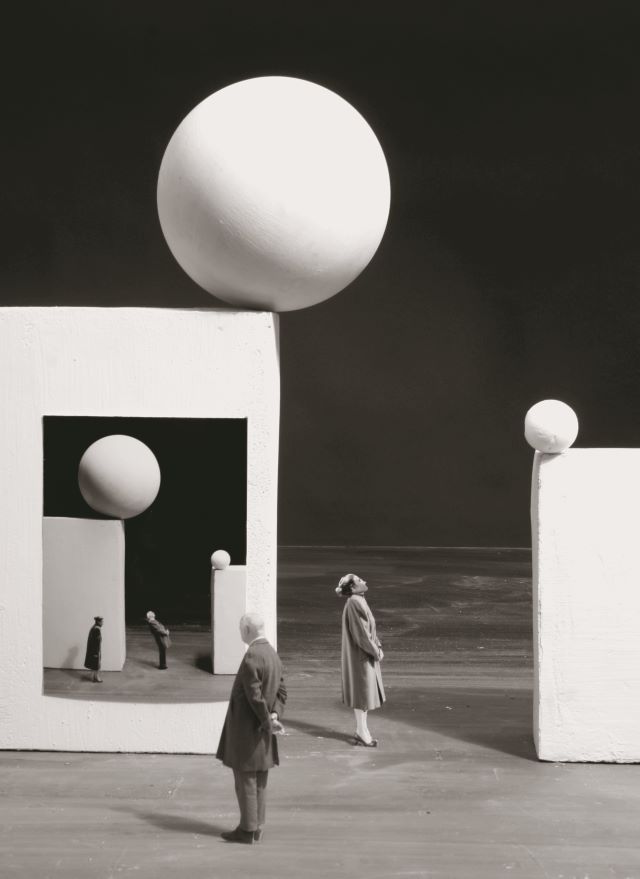
Gilbert Garcin, “Le danger des images.” © Société Générale
Lead photo credit : Stained Glass windows at the Société Générale © Société Générale
More in Boulevard Haussmann, history in Paris, Paris art exhibits, Paris artists, Société Générale
